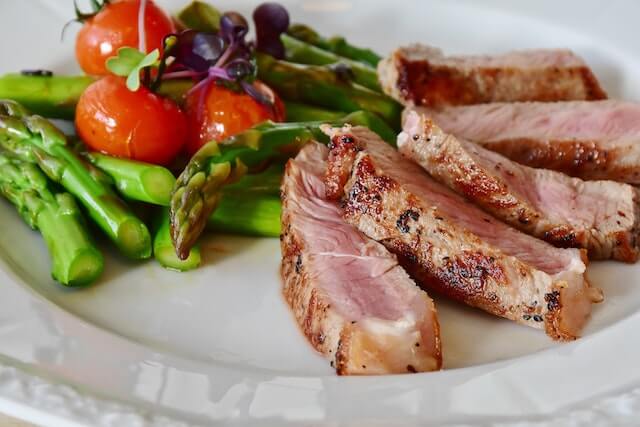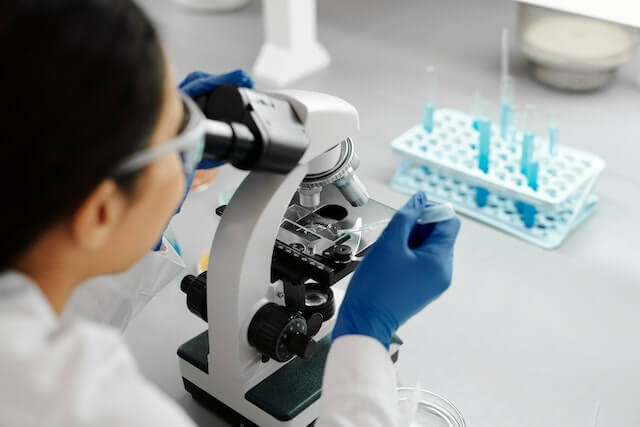Cultivated meat: from the lab to your plate this year
With farmed meat an important factor in climate breakdown, cultivated meat is starting to be a realistic option for us to consume.
Scientists call it clean meat, cultured meat, lab-grown meat, or cultivated cell-based meat.
Let's put our current meat supply in perspective
- In Europe, the average meat consumption per capita is around 70 kg per year, which comes to around 52 billion kg of conventional meat and poultry produced per year.1
- In the United States, that number goes up to 106 billion pounds.2

How is cultivated meat made?
Rather than being part of a living and breathing animal, cultivated meat is grown in huge bioreactors.
The process of growing meat comes from research done in regenerative medicine. In fact, Professor Mark Post of Maastricht University made the world’s first burger in 2013, but he was previously working on repairing human heart tissue.3
Small samples of cells are taken from livestock (without harming the animals) and grown in bioreactors by adding plenty of nutrients. These cells proliferate and differentiate into tissues (muscle, fat…). Finally, these tissues are processed into something that tastes and looks like real meat.
When will it be available for us to consume?
To date, only one country, Singapore, has approved the production of cultivated meat to be sold to consumers. The GOOD meat company has already been selling chicken at special events since 2020.
The United States is next in line. The U.S. Food and Drug Administration (FDA) said last year (2022) that cultivated meat was safe for human consumption.
This is the first step towards being accepted for retail.
It seems that lab-grown meat could become reality in some high-end restaurants in the United States early this year 2023, and the UPSIDE company is expecting to be in the supermarkets in 2028.4

In favor of cultivated meat?
The first and obvious advantage is that animals are not harmed by meat production. Thus, this is a more ethical method than conventional livestock.
Scientists calculate that cultivated meat will have a smaller environmental footprint. Livestock production is responsible for 14.5% of the world’s greenhouse gas emissions through feed production, deforestation, manure management, and animal gasses according to the United Nations' Food and Agriculture Organization (FAO).
Cultivated meat is just real meat but without the antibiotics and other growth-promoting drugs that are fed to livestock. For those who are against plant-based meat alternatives because of their multiple “refined” ingredients, cultivated meat might be a great alternative.
Cultivated meat is “cleaner” since it’s produced in a sterile environment and there is less risk of contamination from chemicals and microorganisms.
Finally, we could “enhance” the nutritional value of cultivated meat by adding extra nutrients or reducing the saturated fat and cholesterol content. We could add more vitamins or healthy fats.
Imagine a steak with the fatty acid profile of salmon!
In the future, customers will be able to customize the nutrient profile of the meat they buy.
Obstacles of cultivated meat (for now)
To reach supermarkets in most countries, cultivated meat faces big obstacles.
The number one problem is a money issue. This sector requires more funding to scale up production and to offer cultivated meat at a more affordable price.
There is a huge need for the nutrient mix used to feed the cells. Currently, about 20% of the nutrients come from fetal bovine serum (blood of a cow’s fetus). This is very expensive and also not vegan.
On the upside, alternatives are being developed. In 2022, researchers used the technique of precision fermentation to produce these cell nutrients. The use of modified yeast to produce proteins is something that has been used for medicine already (to produce insulin for example), and now we are starting to use it to help our food supply.5
Massive bioreactors are required to produce large quantities of cultivated meat. So far, the largest bioreactor can hold 1.200 liters, but companies need at least 200.000 liters. This is the biggest limiting step of this industry.
For example, UPSIDE’s facility can make 400.000 pounds of cultivated meat per year, which equals only 0,37% of the United States meat consumption per year.
Finally, loads of marketing are needed to change people’s perspective on what cultivated meat is so that consumers want to try it.

Dairy without the cow. Egg whites without the chicken. Tuna without the fish.
Precision fermentation doesn’t just stay stop with meat, Remilk and Perfect Day are using this technique to produce milk. No cows are involved!
These companies already have products in the US. We believe this is the future and is closer to us than we think.
Replacing the dairy industry globally with precision fermentation is around the corner!
The Every Company is already producing egg whites by precision fermentation and Finless Foods is creating tuna without fish.
Lion and Zebra steak?
Yes, it is also happening!
A start-up company Primeval Foods sees the chance to use cultivated meat to produce exotic meats such as lion and zebra.
They launched in 2022, and they already released packs of tiger steak and zebra sushi rolls.
My view on cultivated meat
Our current meat production system is not sustainable for the growing world's population. Therefore, we MUST find other ways to feed everybody.
Some people may see lab-grown meat as “unnatural” and have a negative attitude towards it before even trying it.
But, I think our minds will change as cultivated meat enters more into our lives.
And I am all for it.